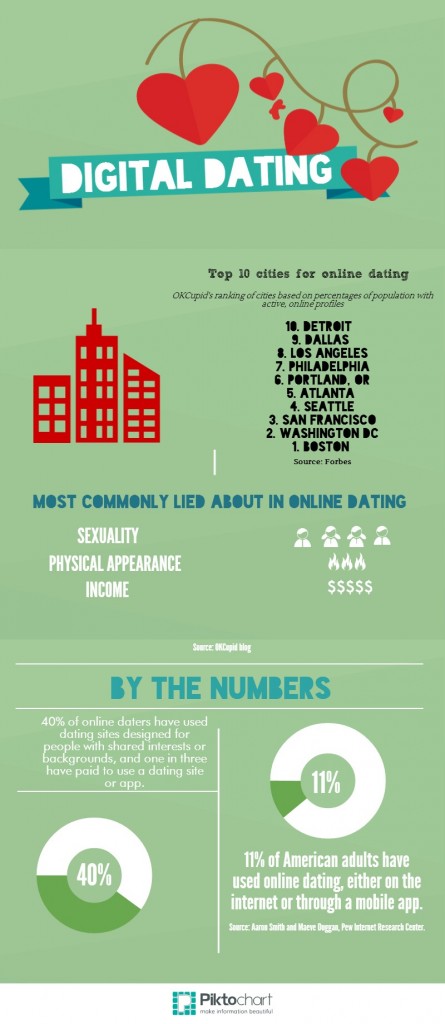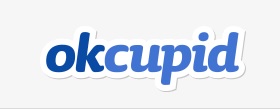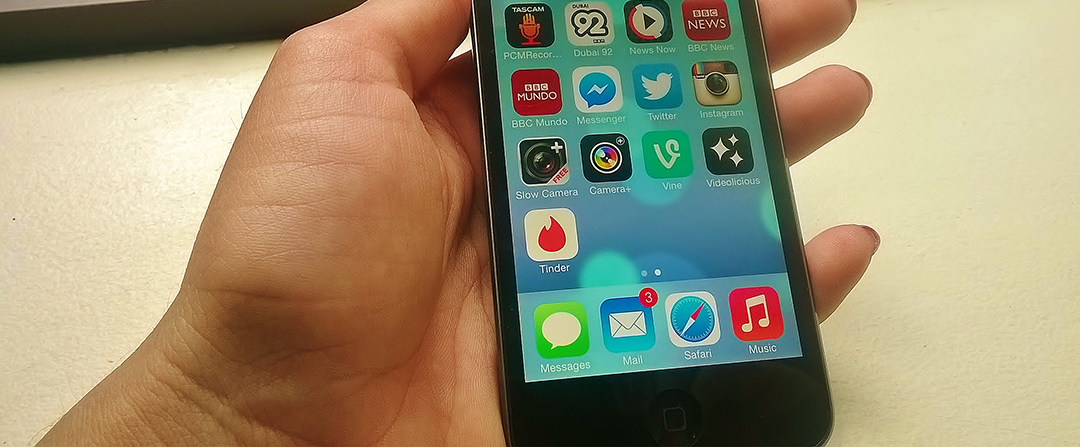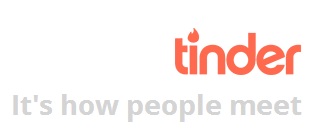“Oh. This one is married. And he says it.”
Laughing as they’re huddled in a living room, Raven, 22, and Bianca, 23, are scrolling through the dating profiles on a popular phone application, Tinder. (Both she and Raven asked to have their names changed for the article to avoid outing themselves as online daters.) Tonight, the two Northwestern University students are mainly using the app for fun, with no particular purpose. Despite the casual nature of their browsing, however, Tinder’s rate-and-match system is quite sophisticated, allowing the girls to search a defined geographical area for a pre-selected age range. If the girls indicated approval of anyone who also approves of them, the app will put the two “matches” in touch to see if there’s any offline romantic potential.
Tinder is not a unique service. The attempt to fit the notoriously ambiguous and uncertain world of romantic attachment into the parameters of the digital world – known for ease, speed and convenience – has led to the bizarre world of online dating. Websites that sort potential partners in searchable, clickable catalogues have exploded in popularity – Match.com, eHarmony, OKCupid and Grindr are now common references in modern day vernacular. Big cities in particular, with their faster pace of life and crowded, impersonal public spaces, encourage online dating. Match.com’s ranking of the cities that most utilize online dating puts Chicago high on the list, at No. 4.
Raven and Bianca joined Tinder after starting graduate school, when their hectic schedules took a toll on their ability to socialize and mix with anyone outside of their program. The two agreed that while they like the idea of meeting someone in real life, it has become more and more difficult as the demands of adulthood grow and culture changes. “Even when you do get to go out, like at a bar, everyone’s on their phones. Nobody’s looking to talk to a stranger anymore,” Raven said.
While previously considered with great skepticism, digital courtship is morphing into another convenience in a world with plenty of technology but little time. Lifestyle columnist Cristen Conger, single and considering starting her own profile, mused about online datingon The Huffington Post: “When you really think about it, it isn’t that different from real world dating. Either way, you meet somebody, hang out and hope for the best.”
Bianca agreed to an extent, saying that by joining Tinder, “the ideal situation would be, I’d find someone cool, who likes the same music as I do, to hang out with and spend time with and really enjoy myself.”
It is a sentiment shared by many Americans. Match.com alone boasts nearly 2 million members, and thousands of others are spread among the other dating sites. The Pew Research Center’s report on online dating showed an undeniable increase in online dating in terms of numbers and acceptability – people were more likely to join a site, use a site or know someone who had met a partner online. As Pew said, “everyone (knows someone who) is doing it” in 2013, 40 percent of Americans reported knowing someone who had used an online dating service, compared to just 31 percent in 2005. Twenty-nine percent know someone who met a long-term partner online, compared to 15 percent in 2005.
 Graphic Credit: Farahnaz Mohammed
Graphic Credit: Farahnaz Mohammed
“It’s become a cultural thing, almost,” Bianca said of the increasing prevalence of the practice. “As a joke, sometimes when we’re walking down the street and we see a guy we find attractive, we’ll say ‘swipe right’ or ‘swipe left’!” (The terms refer to the Tinder method of choosing matches – swiping right on a profile to signal interest, swiping left to signal no match).
Despite the ubiquity of the sites and increase in usage, there is still a lingering stigma. “It isn’t how you want to say you met your boyfriend,” Bianca said. It’s an attitude reflected on the sites themselves – it isn’t uncommon to see users state a get-out clause on their profile, such as: “We can tell your friends we met at a bar.” While the practice is becoming increasingly accepted as a method of meeting partners, research shows there is a negative connotation to online dating. In 2013, 21 percent of internet users agreed with the statement, “people who use online dating sites are desperate,” and about one in 10 online dating users were of the same opinion.
In a phenomenon that bucks the trend of newer being better, the traditional method of meeting partners still offers cues that online dating cannot by its very nature.
Dr. Eli Finkel, an expert on online dating at Northwestern University, has discovered through research that whileonline dating offers users the opportunity to meet others outside of normal geographic and social spheres), it denies the users the ability to assess romantic potential based on key factors, such as chemistry and interpersonal interaction. In the study “Online Dating: A Critical Analysis from the Perspective of Psychological Science,” Finkel said: “Context and interaction have much more influence on romantic outcomes than personality and attitudes do.”
Bianca and Raven’s experiences reflect Finkel’s findings. While encouraged enough by one or two matches to meet in person, the girls have yet to find someone they click with. They describe dates as “awkward,” or “just kind of okay,” despite chatting online with matches beforehand. “It just doesn’t translate sometimes,” Bianca said.
Finkel anticipates an increase in the usage of online dating services. It is undeniably more efficient and offers more choice in a world that prefers both. Perhaps as more people begin to use the services, they will adapt and become more adept at predicting romantic compatibility. For now, however, despite its convenience, the speed and choice of digital dating isn’t quite on par with real life.

For: Casual daters and relationships seekers
OKCupid is a large, free site used mainly by people in their twenties and thirties. It doesn’t filter users by interest, and any one user can message any other. OKCupid’s lack of barriers makes it full of potential for both good and bad experiences. You might find someone you really click with, or you might receive inappropriate requests.
For: Casual relationships, limited potential for more
Purely based on mobiles, Tinder is commonly referred to as a “hookup app.” Its rating system is based purely on appearance and brief (if any) bio descriptions, with only a small indication of shared interests and users connected through geographic proximity. Tinder is best when you’re young, bored and actively looking – but not for much.
For: Relationship seekers
eHarmony is a serious dating website for serious daters. With an aggressive advertising campaign and a patented system for testing compatibility, eHarmony is another pay-for site that claims it has designed a unique matching system guaranteed to deliver ultimate compatibility.
For: Notorious for hookups, potential for more.
Vanity Fair humorously described Grindr as “the biggest, scariest gay bar on earth.” As one of the most prominent apps in the LGBTQ dating community, Grindr boasts a huge number of users per day. The app is geosocial, so users are linked by geographic proximity rather than compatibility. Also like Tinder, Grindr allows matches to chat, creating the potential for a relationship beyond convenience.




